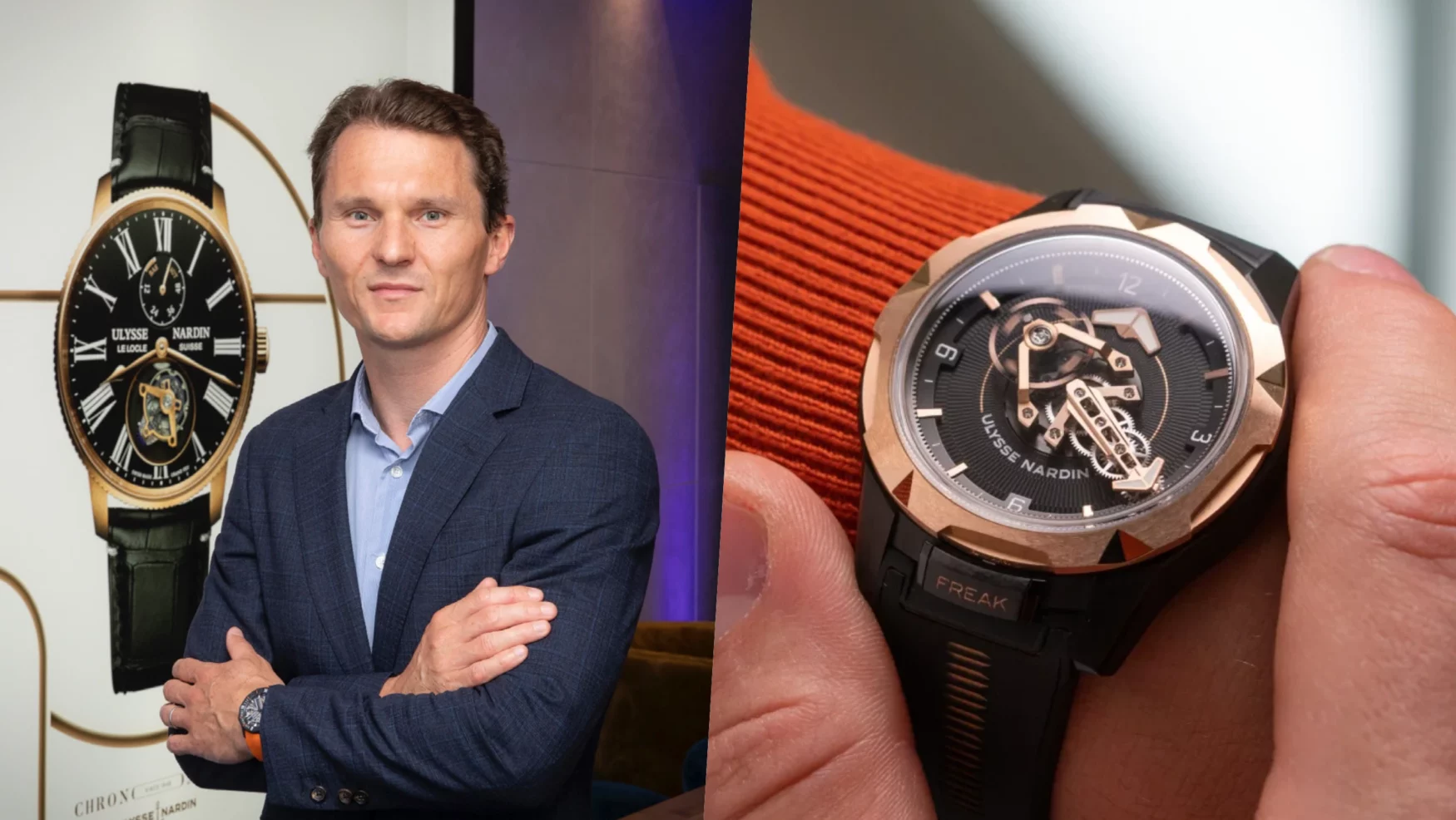Talking Freak, food, and more with Ulysse Nardin Chief Growth Officer Matthieu Haverlan
Zach BlassUlysse Nardin is a brand that has a ton of momentum at present. After a bit of a rocky era under Kering, and with a buyout looming, Ulysse Nardin CEO Patrick Parnaux and senior management would go on to acquire Sowind Group SA in 2022 – leading both Ulysse Nardin and Girard-Perregaux to regain full independence. While the split from Kering was described as amicable, independence affords a greater level of autonomy and freedom with far less red tape. This has meant Ulysse Nardin finds itself in a great position to spread its wings and grow. And, speaking of growth, during Dubai Watch Week I took a moment to sit down with Ulysse Nardin’s Chief Growth Officer Matthieu Haverlan to talk about the momentum of the brand, the Freak’s recent huge win at the GPHG, and more.
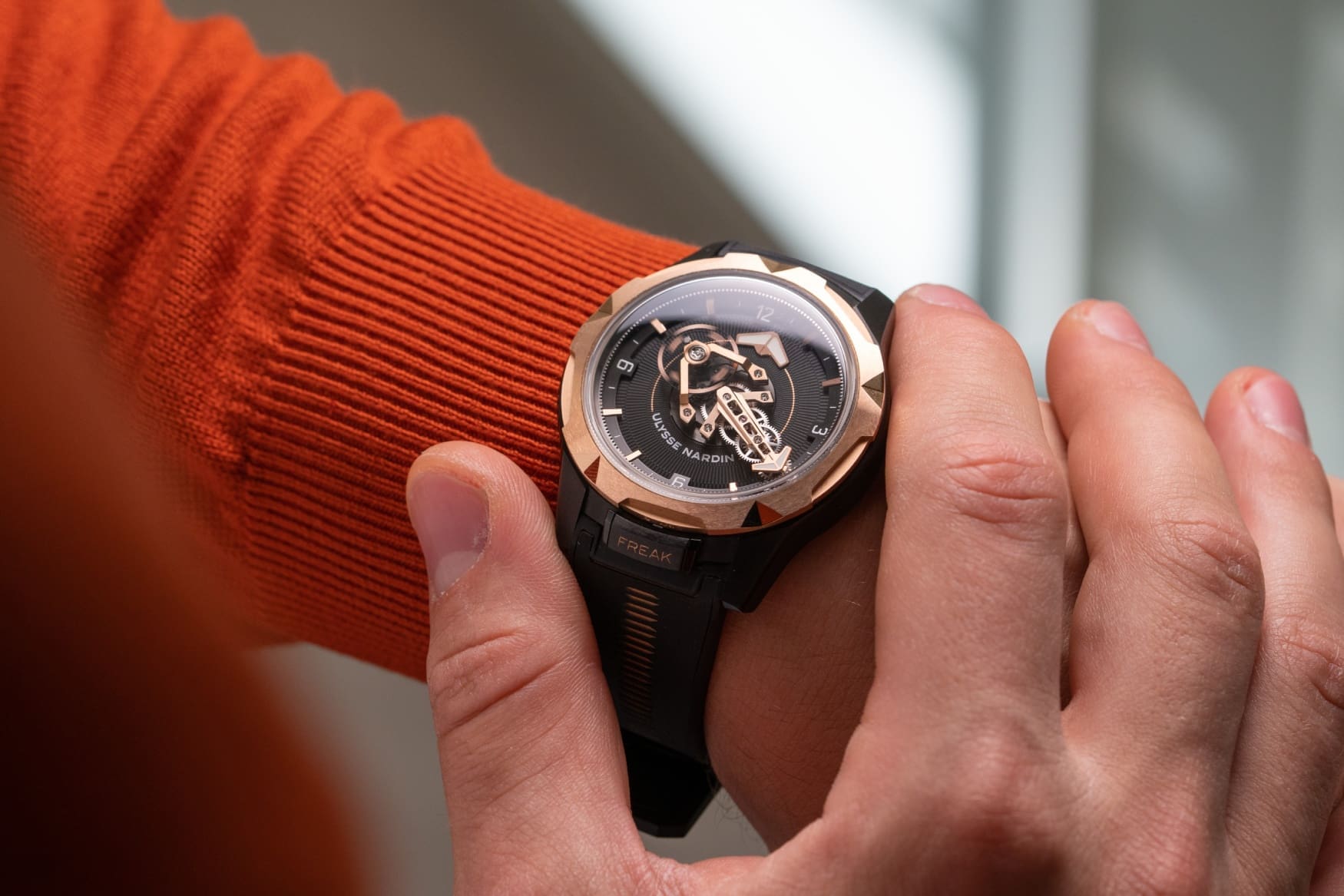
Zach Blass: The Freak was recently recognized by the GPHG academy and jury with the award of the Icon Prize. What was your and the Ulysse Nardin teams’ reaction to this win?
Matthieu Haverlan: Look, I was in the audience – obviously waiting for that prize finally to be won. I think I screamed and said, “Wow!” First of all, it’s amazing news for the company and amazing news for the employees, for everyone. I’m also so happy for Ludwig Oechslin because he is the mastermind behind the Freak. He needs to be really more recognized, I believe, in the industry. He’s a genius. He’s a living legend. He’s 75. He’s still working now with us again since we are independent. And so it’s a lot for him. And finally, we don’t have to say that “Yes, Freak is an icon.” It is. It is the icon of the 21st century watchmaking, and it has been, I would say, validated, and acknowledged by the watch industry, and the watch community.
ZB: I imagine it’s very elating to finally have that title of icon – perhaps long overdue. Some are not aware that the Freak is a model, or collection, born 22 years ago.
MH: You need time to be recognized in Icon, right? Not an icon in five or 10 years. So I think the Freak has now become a collection that people can really understand maybe a bit better, having conveyed more messages for the last five years about the Freak. So I think it is getting known out there.
ZB: Will the prize shift how the Freak will be communicated to the clients moving forward? Does winning A GPHG help in terms of presenting the watches to people who come in and are looking at the product?
MH: Look, I think on the way we pitch Freak, the only thing that’s going to change is to say that it is the icon of 21st century watchmaking. I think we were not so much talking about the iconic part before. Now, it is. So I would say it’s now the starting point of pitching a Freak to anybody. The other thing is, I was with collectors yesterday night. I had a dinner in Dubai, and they are in a lot of WhatsApp groups that, all in all, have 350, 400 clients and collectors. And I asked the people I was with, within all those WhatsApp group of collectors, do you hear more about the Freak since we won last week? And they said to me, “Yes, and big time.” So the fact that we won that prize is being discussed in the various collectors’ community.
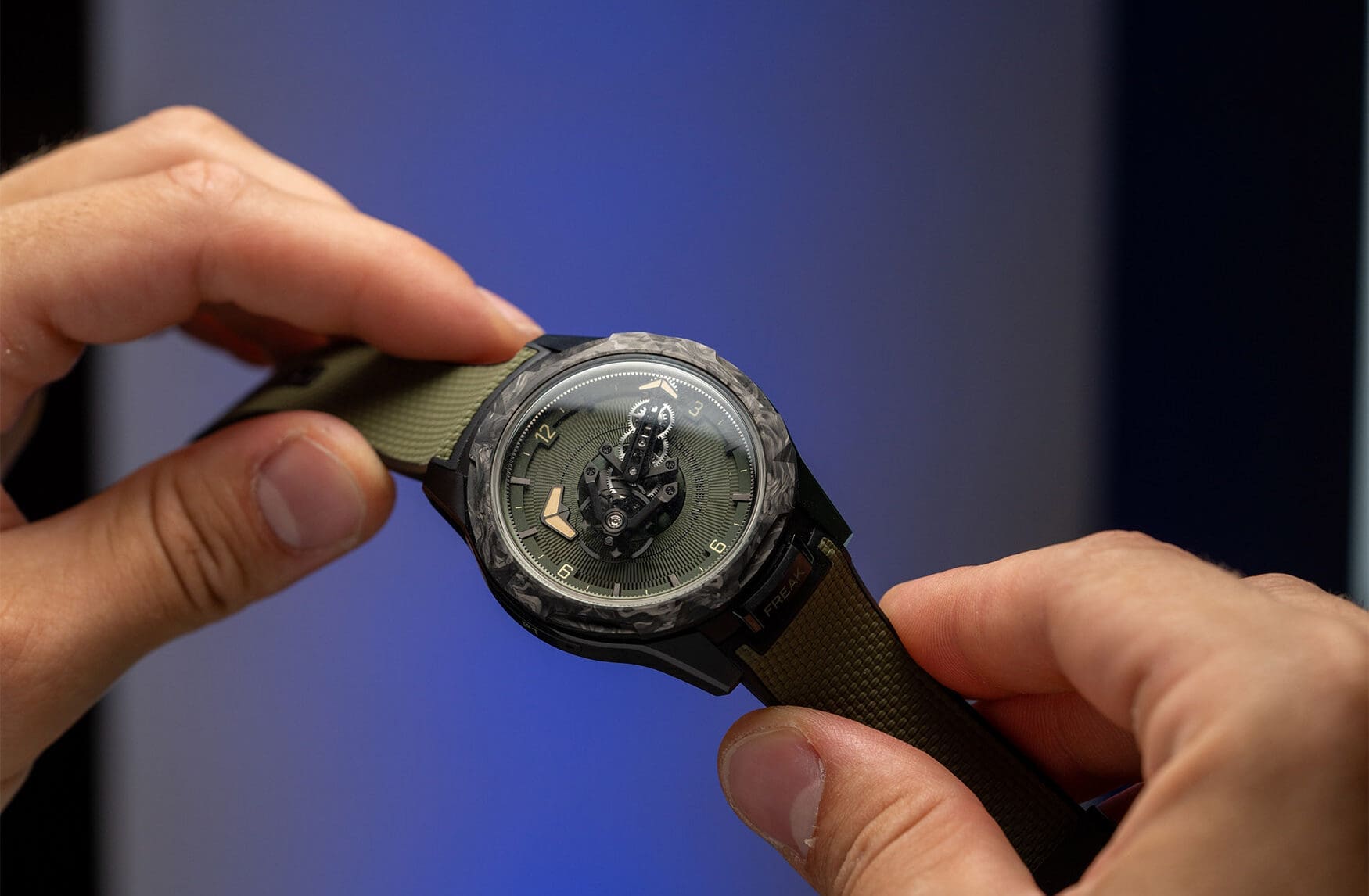
ZB: Here at Dubai Watch Week, Ulysse Nardin just unveiled the new Freak ONE OPS, but one thing our readers noticed was the price. The Freak ONE OPS is set at US$66,500, but when you look at the Freak X OPS it is priced at US$33,800. So were a client to ask, how do you walk them through why the Freak ONE OPS is nearly twice the price?
MH: Very good question. I think it’s really two different products. Obviously, both are Freaks. When we launched the Freak X in 2019, some of the Freak owners said to us, “But what do you do with the Freak? Now it’s becoming like a 20K, 25K Swiss Franc watch. It’s not possible. You are basically downgrading the Freak,” et cetera, et cetera, which I fairly understood. But at the same time, having one single product at 70K or 80K, like it has been done since the beginning, doesn’t help to really tell to a wider audience what is a Freak all about. So we have to be at some point, in terms of pricing, also a bit more accessible. So we made the choice for the Freak X to be the first ever Freak to have a crown. And we did that because it is a simplified version of the Freak movement. So it’s basically a hybrid movement between the 118 caliber on which we added a carousel. So in my view, it’s not like a 100% Freak concept. But from a design perspective, and also with the carousel, it has a lot of Freak, I would say, essence. The Freak ONE is the real deal. Freak ONE is the real deal because it doesn’t have a crown, it’s full construction of the Freak movement, and you’ve got a lot more technology to it.
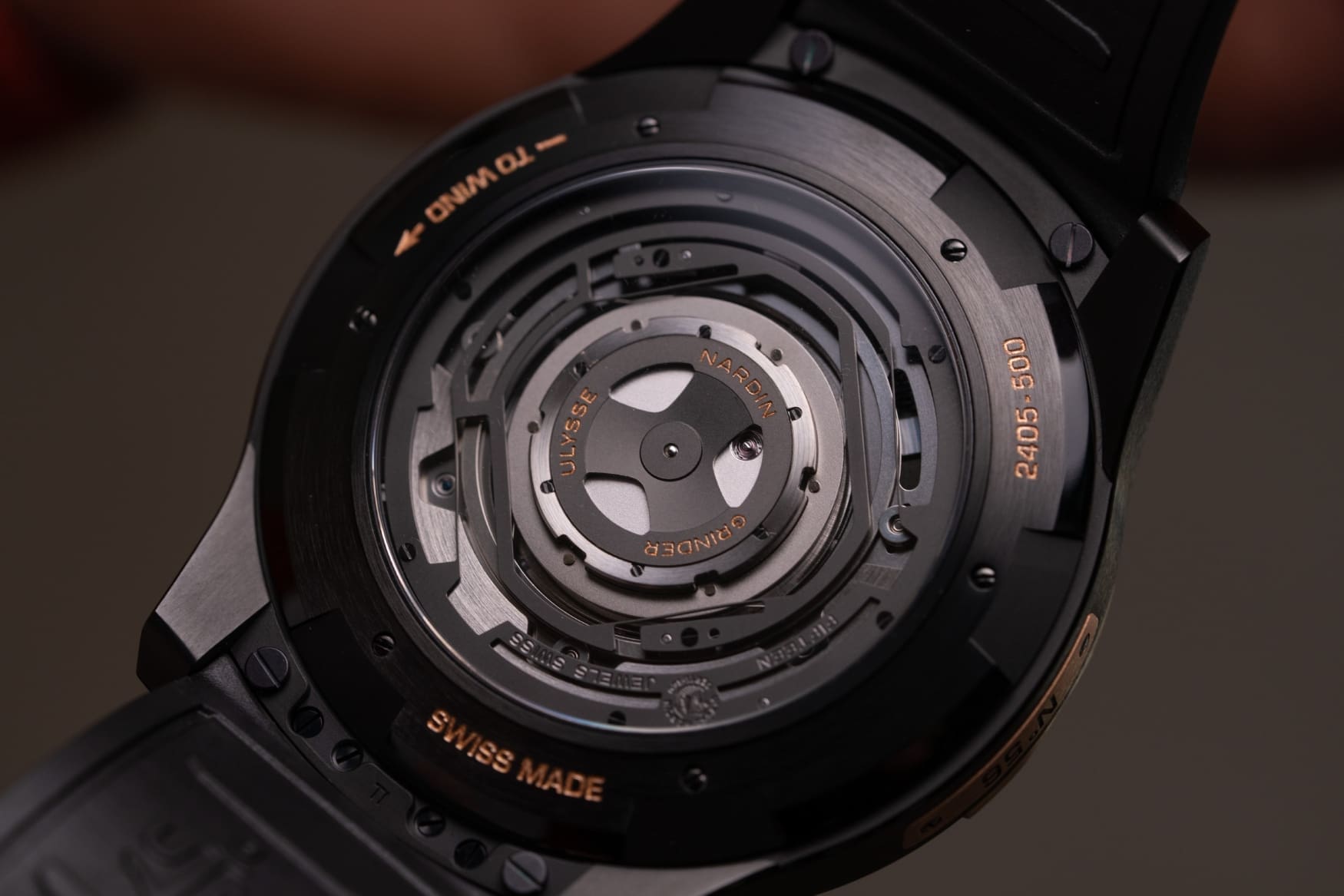
ZB: Okay, so it’s primarily the added complexities and innovation within the movement that results in the higher price.
MH: Yes, I would say 80% of it is definitely the technology and the movement. You’ve got integrated in that movement also the Grinder®, which is the patented revolutionary automatic winding system that we launched in the concept watch about five years ago, that has been launched then in the Freak Vision in 2018, and that has been launched also in the Freak S about two years ago and now in the Freak ONE. It is the future of the automatic winding system, and it is twice more effective than any automatic winding system on the market. And then on the aesthetic side of things, The Freak ONE has a more complex case. It’s a very complex bezel on which you have three different levels of finishing. And you’ve got also a bit more precious material, especially on the first version of the Freak ONE. It’s a bit like, comparing it with a car, the Freak X is like a Porsche 718, and Freak ONE is like a 911 Turbo.
ZB: It seems that over the last few years, I would say, the focus has been Blast and Freak – although there have certainly been a few novelties outside those collections as well. But I have heard colleagues and collectors express they would love to see the return of what Ulysse Nardin has done in the past – more classic timepieces. Will the focus in the next few years shift towards potentially doing more, let’s say, conventional watches, or with all the excitement that’s going on, especially in the wake of the GPHG, we will continue to see more of a focus on Blast and Freak?
MH: I think you can’t ride too many horses at the same time. So we are going to really keep the strategy of being known as a contemporary haute horlogerie brand. Hence, Freak, hence the Blast. These are our hero products, so unique. We’ve got also the Diver, which is definitely also sporty and contemporary. The role of the Divers watches is to be the pioneering sustainable sports watch. With the Marine, which is to me the line that has to be a bit more traditional and conservative, it has not had the largest focus. But I think you might hear more about the Marine probably in a couple of years from now.
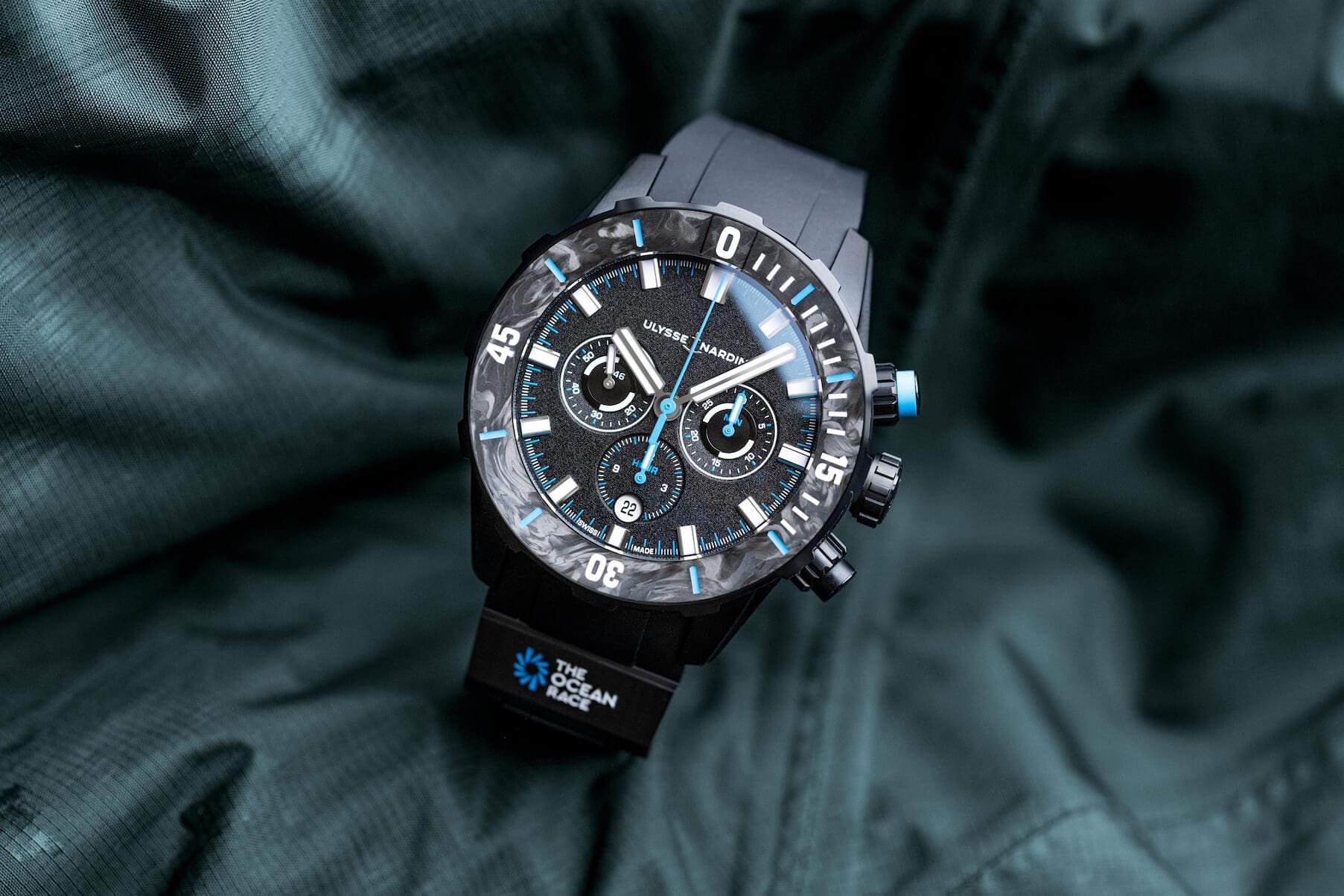
ZB: On the topic of sustainability. I was able to first-hand get a closer look at your parternship with 11th Hour Racing and The Ocean Race – a grueling competiton that focus a lot on environmental efforts. The Divers watches released in honour of The Ocean Race themselves have notably included sustainable materials. Has sustainability become a bigger point of discussion with certain clients? Are more and more people coming to the brand and saying, “This is something we want to see”? Because I never know if brands do this because of the PR and the benevolence of it, or if there truly is a demand from clients saying, “We want this, we want to see it.”
MH: Frankly speaking, I don’t see that really yet from the demand perspective. It’s more really an inner commitment in the company that we want to do the right thing and explore sustainability-focused efforts and endeavors.
ZB: That interests me because, in my view, watches can be inherently sustainable as they are built to last generations rather than forced into obsolescence like an Apple Watch which eventually dies. I find myself more concerned with the greenness, so to speak, of the manufacutre itself. What is being done at the manufacture level in the name of sustainability?
MH: There is a lot that we do that we don’t say, and it’s okay because it’s not about PR. As an example, we are the first, and I believe still the only one, that recycle 100% of the latex finger gloves used by the watchmakers. The finger gloves are about 100 kilos a year that we basically recycled. We go to that extent. Obviously we remove all the plastics that we use in the company. Obviously, we’ve got recycling bins, basic things like that. Obviously, it goes a lot into the product. We very regularly communicate within the companies the fact that we need to be aware of our consumption. We’ve changed the lighting to LED. We’ve reduced even the pressure on the tap to make sure that we consume less water. So all those things, we don’t talk about it because we just feel it’s natural to do it. We try to be very concrete on all the actions to reduce global consumption in any way. And that’s why I’m very specific because I’m more into what is the sum of all those actions that actually matter in the end. Then, naturally, you see more and more of a sustainability focus within the products as well.
ZB: I definitely do not want to diminish the importance of sustainable materials being used within watches. So, can you quickly highlight some efforts on the product side as well?
MH: Sure. For instance, because we’re known for our rubber straps, we try to reuse the waste of the rubber in the manufacturing of the rubber straps. So today, on all the Divers, and even on the latest Freak ONE, 30% of that rubber strap basically has been reused from rubber waste. And the goal is basically to go to as close to 100% in the end. Because we’ve got a strong heritage with the sea, we want that sustainability to be linked to the sea which is 70% of the planet. So that’s why we were also really proud we found a partner that helped us to develop a strap which is 100% recycled fishing nets. We even went further, developing a carbon composite material we’ve named Carboniun. Basically, it’s a material that is used in the wings of the plane that are no longer in use, and we find a way to mix that with fishing nets.
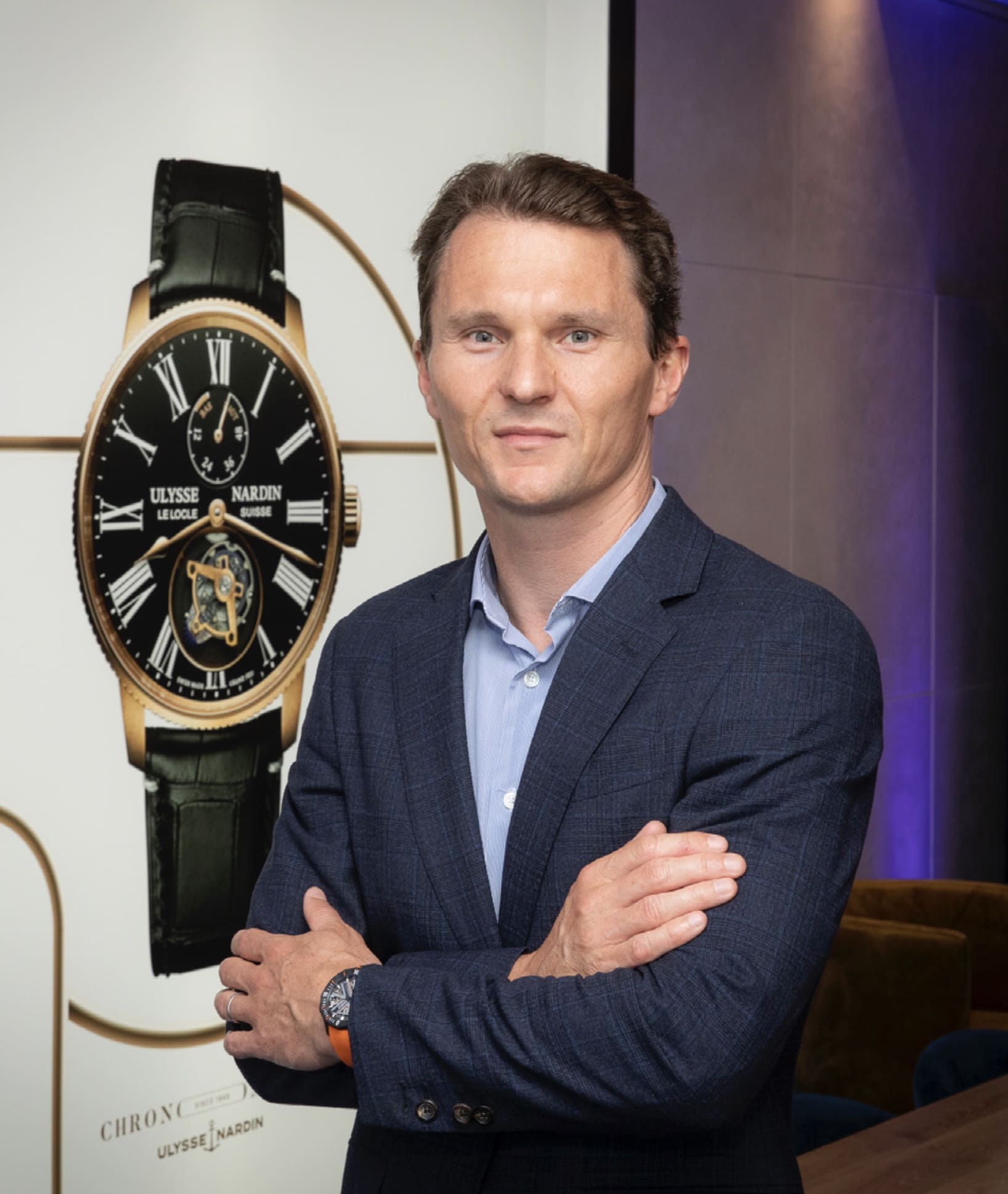
ZB: Now, at least if I’m not mistaken, interestingly I noticed that there isn’t an e-commerce element currently in place. You can not buy a watch from the directly from the Ulysse Nardin website. Why is Ulysse Nardin strictly utilising the “find a store” approach, rather than having e-commerce in this very digital era. Especially during the pandemic when people were starting to buy more watches online. Why does Ulysse Nardin not want to do it that way and instead limit it to just in-store?
MH: So first of all, there is a technical aspect to it, because we used to be selling online in the UK and in the US when we were part of Kering, because we had, yes, a website host. That part of the backend was managed through basically Kering. So being no longer a part of Kering, we’re being disconnected from that e-commerce platform. We’re going to do it again. I’m going to reactivate the US and the UK, for two reasons. It’s because they’re, apart from China, which is a different ecosystem that has to be managed differently, for the western part of the world, the UK and the US are the two biggest e-commerce markets. And in the UK we’re mainly sold physically in London. So that will help us to have better coverage through the UK. In the US, it’s a very fragmented market, where also we reduce a lot of the distribution footprint. We used to have 70, 80 points of sale. Now we have 35. So I really want to start reactivating those two markets, and I am very much more in the spirit of starting something small, to do it well and then expand.
ZB: Prior to joining Ulysse Nardin, you had worked with the Swatch Group and Richemont. So of course you’re familiar with how other brands operate, but what would you say are the distinct elements of how Ulysse Nardin operates, and things that perhaps you would want our readers and Ulysse Nardin fans around the world to know, in terms of the distinct way in which Ulysse Nardin works and runs and thrives?
MH: I think the motto that I’m trying to apply to myself and to apply to the team is, “Test and try. Test and try. Test and try.” Small scale, and then if it’s working, we try to expand. So it can be relevant really in any kind of department of the company. Obviously, for sales and distribution, we try to, for instance, innovate in different ways. We engage with the customers in ways, we’re going to be creative, taking over visibility at some point of sales. If you go to Geneva Airport for instance, just below the luggage, it’s a space that used to be empty, not for advertising. Basically, I came to the airport and said, “What if we could take over that part?” So that kind of very entrepreneurial mentality of coming up with your ideas and trying to implement and test and see the results, that was already within the company when we were part of Kering, but now it is very much more valid. And then the other thing is, even though we produce less than 10,000 watches a year, we want the people to feel that they can connect with the brand as if we were MB&F selling 300 or 350 pieces a year. We are truly independent. It’s not like we have a private equity that bought the company with an agenda to sell the company in five years. It’s the people working for the company that owns the business, and therefore, we’ve got a very much more long-term view in the way we do things.
ZB: As a fun way to wrap things up, with Watches & Wonders becoming more of a public-facing event, rather than just for the industry, more and more people will be coming to Geneva from the collecting community to visit. It has been brought to my attention that you are a bit of a wine and gastronomy aficionado. Am I correct?
MH: Yes, I am. I am very much.
ZB: So, for the readers who may be traveling to Geneva, whether for Watches and Wonders or just any other time of the year, what are some of the hidden gems people visiting Geneva need to check out, whether a restaurant or a bar? What are your recommendations?
MH: Oh, there are quite a few. Look, if I had to pick, let’s say, three restaurants, one would be the Peruvian restaurant Yakumanka. It’s in the Mandarin Oriental Hotel. It’s a bit pricey, but it’s really good raw fish, amazing spices, ceviches. So I absolutely love the food. And actually, I don’t know any other Peruvian restaurants in the area. This one is really one to go for. Another one is in Place Longemalle, on the first floor of the Hotel Longemalle. It’s a Lebanese restaurant called Balila. Beautiful Lebanese cuisine, absolutely amazing. I absolutely love this place. And maybe the third one would be something that probably nobody will know because it’s a small family business. It’s the parents and the son that own and operate it – doing all the cooking and the serving. And it’s a kind of a French brasserie really for the locals. It’s a very small restaurant, very narrow, and the name is called Le Thermomètre. You go there, and you have the beef filet with a very nice mushroom sauce on it. That’s absolutely the one to go for. You go there at 12, be among the first ones, because you’re the first one in the restaurant, it’s very calm. And then you’ve got the people coming along, and it becomes very noisy. The atmosphere is very good.
Editor’s note: this interview has been edited for length and clarity.




